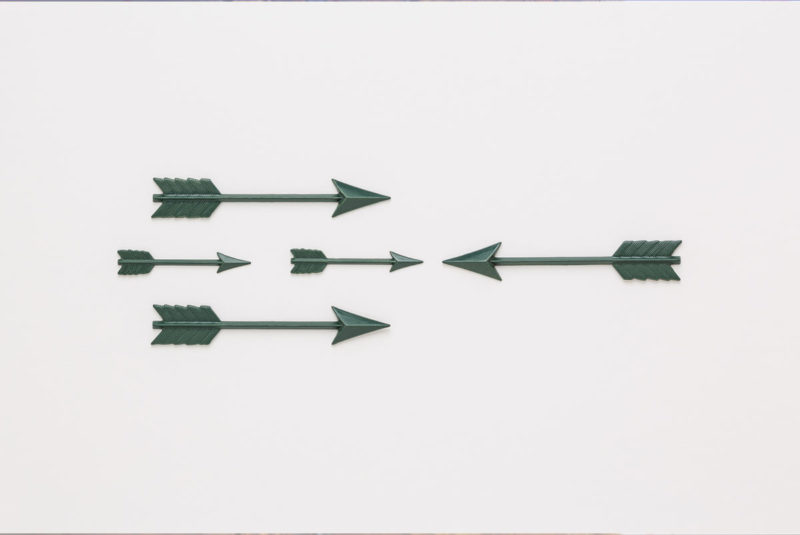Ready To Buy a Home?
Get Approved to Buy a Home
Rocket Mortgage® lets you get to house hunting sooner.
If you’re self-employed and your income is unpredictable, bank statement mortgages could be the answer to your home buying prayers. This nontraditional mortgage can be a good option when you can’t provide standard proof of income.
According to a 2020 Gallup report,[1] more than 44 million Americans are self-employed. That number includes independent contractors, freelancers and gig economy workers. For self-employed borrowers, bank statement mortgages can give you a leg up on the home buying process and put you one step closer to homeownership.
We’ll take a deeper dive into bank statement loans, what documents lenders will need to analyze your finances, how to find a bank statement mortgage and other special considerations for bank statement loans.
What Is a Bank Statement Loan?
Verifying your income is an important part of the mortgage approval process. Because lenders can’t verify a self-employed borrower’s income using the same financial paperwork they would use for a salaried employee – like pay stubs, tax returns, W-2s and employment verification – lenders will require additional proof of income from self-employed borrowers.
For bank statement mortgage loans, borrower income is verified using bank records. Borrowers provide documentation of their financial activity – including income, deposits and withdrawals – to qualify for a home mortgage.
What About Stated Income Loans?
Before the mortgage crisis in the early 2000s, stated income loans (aka “liar loans”) became very popular. Borrowers applied for loans without having to supply any proof of income to a lender. Lenders only needed to ask borrowers to “state” their income (hence the loan’s name) on their mortgage loan applications. Stated income loans became a common way for borrowers – particularly self-employed borrowers – to clear the income verification hurdle that comes with traditional mortgages.
Because of the role stated income loans played in the 2008 collapse of the housing market, today, borrowers can no longer take out stated income loans for owner-occupied housing.
For self-employed borrowers, lenders can use bank statements to calculate income and determine a borrower’s ability to repay a loan. But bank statements may not be enough. In some cases, lenders may require additional steps and paperwork to verify income.
How Do Bank Statement Loans Work?
Bank statements provide lenders with a monthly or quarterly snapshot of your financial activity, including deposits and withdrawals. By reviewing your account activity, lenders can see how much money you have coming in, how much you save from what comes in, how you spend your money and how much money you have sitting in your accounts.
Deposits
Deposits are sums of money placed in a bank account. Deposits can include direct deposits, checks and wire transfers. Based on the amount of money in your account(s), your bank may pay interest on your deposits.
Withdrawals
Withdrawals remove money from a bank account. This can include automatic payments for things like utilities, streaming subscriptions or car loan payments. Anytime you make an online or in-person purchase using your debit card or hit the ATM for cash, the bank counts that as a withdrawal.
[Money Fact]
How bank statements should be provided to lenders
As part of the application process, the lender will confirm your income and expenses by requesting a verification of deposit from your bank. The bank usually responds by mail or fax. Next, the application goes through the underwriting process. Depending on the complexity of your financial documents, underwriting can take 21 – 45 days to complete.
Before you start collecting your financial paperwork and saving up money, review this list of what lenders look for:
- Make sure you have adequate documentation to prove that you’ve been self-employed for at least 2 years, and you’ve set aside at least 20% for a down payment. Lenders who offer bank statement loans typically like to see that you’ve managed to save 2 – 6 months of cash reserves.
- Have cash reserves on hand. Make sure you’ve saved up enough money to cover a few months of mortgage payments and manage any short-term needs or emergencies. Let’s say, for example, that you set aside $10,000 of your $20,000 in savings for your mortgage payments (principal, interest, taxes and insurance). You’d have 5 months’ worth of mortgage payments saved.
- Try to avoid red flags, like bounced checks, nonsufficient funds charges and unexplained cash deposits. Dipping into savings a lot or constantly being overdrawn sets off alarm bells for lenders and increases the chances of your loan application being denied.
- Always be upfront about your spending patterns and be ready to clarify any questions a lender or underwriter may have about your finances.
How Do I Qualify for a Bank Statement Mortgage?
Once a lender analyzes your bank activity and determines your debt-to-income (DTI) ratio (which is the percentage of your gross monthly income applied toward your debt), they will determine how much you qualify to borrow.
The criteria for getting a bank statement mortgage as a self-employed borrower varies by lender. But here are some standard requirements you’ll have to meet to secure a bank statement mortgage loan:
- 12 – 24 months of bank statements showing deposits and withdrawals for cash flow evidence (You can get online statement copies from your online banking account.)
- Proof of at least 2 years of self-employment or contract work
- 660 credit score or higher
- 20% down payment or 10% down with mortgage insurance
- A DTI of up to 50% (try to pay down as much of your debt as you can before you apply)
What Are the Considerations To Keep in Mind With Bank Statement Loans?
Even with good credit and a big down payment, it can be challenging for a borrower to secure a competitive bank statement loan interest rate. In fact, excellent credit and low-to-no debt aren’t a guarantee that the application process will be smooth sailing.
A lender may request more documentation before giving a bank statement loan, such as a letter from your accountant or bookkeeper detailing your business expenses and verifying your income as an independent contractor or freelancer.
Pro tip: Increase your chances of getting a bank statement mortgage (and one with a good bank statement loan rate) by keeping your finances in order.
Try to pay off any debt without tapping into the money you’ve set aside for the down payment or dipping into your cash reserves. Keep an eye on your bank account balances to avoid overdrafts. Don’t apply for any high-dollar loans 6 – 8 months before you apply for the mortgage loan. And if your lender or underwriter asks for an explanation or more paperwork before they will give a bank statement loan, respond ASAP and be honest and upfront in your correspondence.
How Do I Find a Bank Statement Loan?
Not every mortgage lender offers bank statement loans. It can take a little extra work to find a lender who will qualify you based on bank statements rather than tax documents.
The best bank statement mortgage lenders will be the ones with experience who have worked with self-employed borrowers and understand this kind of loan. Ask about down payment requirements, interest rates and what credit score you’ll need to qualify for the loan.
You Do Everything Else for Yourself – Why Not Get Yourself a New Home?
A bank statement mortgage is a great loan alternative for self-employed entrepreneurs, freelancers, seasonal workers and independent contractors. Help your lender say yes to your loan by demonstrating a track record of responsible financial practices and keeping track of all the paperwork you’ll need to prove what a responsible borrower you are.
Take the first step toward buying a home.
Get approved. See what you qualify for. Start house hunting.
The Short Version
- A bank statement mortgage uses bank deposits instead of tax returns to verify your income on a mortgage application
- Bank statement loans are nontraditional mortgages that verify income with bank deposits rather than tax returns, W-2 statements and pay stubs
- Bank statement loans are harder to find because not all lenders offer them, but for self-employed borrowers, it’s worth the search
Gallup. “Gig Economy and Self-Employment Report.” Retrieved January 2022 from https://quickbooks.intuit.com/content/dam/intuit/quickbooks/Gig-Economy-Self-Employment-Report-2019.pdf




